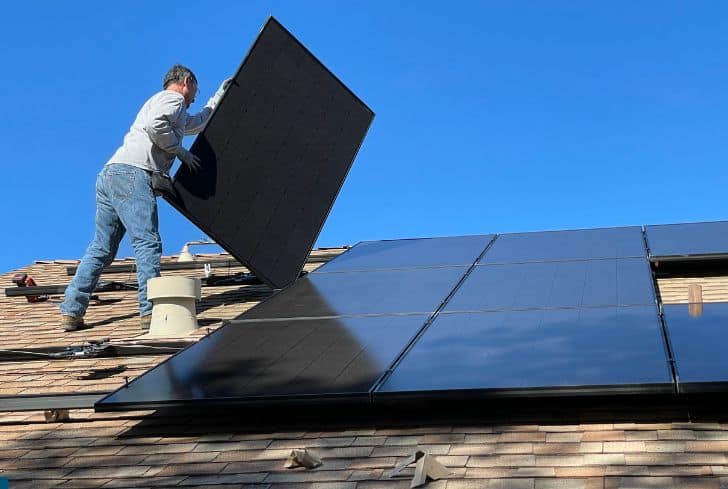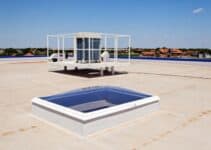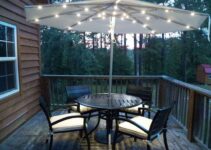Solar technology is making waves, and flexible solar panels are one of the innovations in the market today. They’re lighter than the typical solar panels because of their slimmer silicon cells.
Flexible solar panels are bendable and pliable, so you can use them on a flat or curved surface. This allows a range of flexibility of applications in projects, but is there a limit?
Can you cut flexible solar panels? Will cutting them affect their efficiency if they’re too large for your project? Well, it may; but we can show you how to do it safely. Just keep reading!
What is a Flexible Solar Panel?
The name already implies what a flexible solar panel is. It is an emerging solar technology that you can bend in directions that your typical panels cannot.
Essentially, this more pliable version can be bent and twisted in many directions. They’re thinner and more portable, even though the photovoltaic silicon cells are similar to rigid solar panels.
The solar cells of flexible solar panels are three hundred times smaller than that of the conventional solar panel, making it easier to bend this piece of technology without affecting the output.
But there is a catch – flexible solar panels are not as efficient as the conventional or rigid ones. That’s why they’re recommended for commercial use more than domestic use.
You can also invest in a sizable one if you are camping or hiking. The panels are cheaper, lighter, and portable so that you can attach and detach them at will. They are also available in many shapes and sizes and can be flat or curved.
Another perk of using flexible solar panels is the durability it offers. Even when you transport it in unfavorable conditions, there’ll be little to no damage when you set it up for use.
Can You Cut Down Flexible Solar Panels?
There are many reasons you would want to cut your solar panels, and the main one is increasing their efficiency. If you do it correctly, you can reduce resistive loss or the loss of power that occurs during energy transmission.
Energy loss naturally reduces the efficiency of power produced, so cutting the solar panels also minimizes the current generated and helps it work better because there’s less lost energy during transmission.
Their shade tolerance also increases because flexible solar panels use two different wiring systems. This means that if one area doesn’t receive enough electricity, the output won’t be affected because the other area will.
However, there are some downsides to cutting flexible solar panels. The most notable one is the efficiency loss it’ll experience. It may not be a lot, it falls between three to four percent, so it is still something.
There is also the risk of induced cracks. This happens during the lamination process, but you cannot see it without infrared imaging. It is there and will undoubtedly do some damage down the line.
Essentially, you can cut flexible solar panels, but it is not recommended. It is better to speak with a technician if you believe this is the only course of action you can take.
Can you Walk on Flexible Solar Panels?
You shouldn’t be walking on any solar panels. You may think walking on them to clean or repair them is okay, but this may affect their efficiency. And you won’t even know it.
This is because solar panels contain solar cells, which capture and convert sun rays from photons to direct current. They are super sensitive, even though manufacturers protect them as much as possible.
You can still damage them just by walking on the surface. And the chances are even higher when you wear high-heeled shoes or soles with rough and sturdy surfaces.
Additionally, stones and dirt from the spaces in your shoes can scratch the surface of the panels, creating scratches that grow larger by the day.
Well, that’s the general rule for walking on solar panels. So, can you walk on flexible solar panels? After all, they’re a different technology that can be bent and twisted in many directions.
Experts recommend that you avoid walking on flexible solar panels. Regardless of their malleability, solar panels still contain sensitive photovoltaic cells that can be broken. So, avoid walking on them.
And if you have to, do it with your bare feet. This will help prevent cracks that may spread over time.
Can You Stand on Flexible Solar Panels?
You may want to stand on your flexible solar panels for many reasons. If you’re considering it, don’t.
Flexible solar panels are lighter than the typical rigid panels, even though this makes them more versatile. They are made with a thin film, reinforced to protect your solar tech from harsh elements but may not hold their weight beneath yours.
While the panel is flexible as a whole, too much force on a single area may damage it. If you are installing flexible solar panels on a boat, do it in a place you will not need to visit frequently.
This is not because you are at the risk of electrocution, because that is a myth. You will not get electrocuted.
Contrary to the popular belief that solar panels will release bursts of electricity when you walk on them, there is a low chance that you will get electrocuted when you stand or walk on them.
If you are strongly discouraged from standing on rigid solar panels, the same applies to flexible ones. If anything, their lighter and more malleable structures make them more susceptible to damage.
Standing on flexible solar panels will affect their efficiency. And considering that their solar cells are about three hundred times smaller than the typical ones, making them more fragile.
Pay attention to where you leave your flexible solar panels; avoid high-traffic areas.
Avoid standing on them unless it is necessary.
Even the average solar panel will cave in under excessive weight. You may be unaware too, but the impact of standing on the surface can be long-term if there’s a hairline fracture. It will continue expanding and contracting until the solar cells are affected.
How to Cut a Flexible Solar Panel?
When a rigid solar panel system would be too bulky for your project, you can consider a flexible one.
However, you may also need to cut it in some cases. If you have confirmed from experts that you should, then let’s guide you on how to do it without damaging the cells.
There are two ways to cut flexible solar panels; scissors or a laser cutter.
To cut with scissors or carpet knife, ensure it is sharp enough to cut through materials. You also need a ruler, pencil, goggles, protective gloves, and adhesive tape or silicone spray.
Get started by wearing protective gear. Then, mark the length you want to cut through with the pencil and use the scissors to cut the line carefully. The thin film won’t crack if you don’t apply too much force, so avoid pressing too firmly.
Stick to the straight line you have drawn, and cut it in a way that leaves you with a long strip of the thin-film solar material. Afterward, attach it to your desired surface.
Alternatively, you can use a laser cutter. This method is cleaner and preferable, provided you use double-sided tape.
Attach the thin film of the flexible solar panels to the tape and set the laser cutter in place. Ensure you have positioned the panels properly before hitting the “start” button to activate the tool.
Again, you can cut flexible solar panels, even if it’s not the best. We recommend purchasing units that have been cut to suit your project. Custom-cutting them is also an option that will not affect the system’s efficiency.
Can You Bend the Flexible Solar Panels?
Years ago, the thought of bending solar panels would have been preposterous because of the solar cells. But now, this technology exists, and you can use it for various projects.
To answer the question of whether you can bend flexible solar panels, we’ll say yes. You can bend solar panels when the need arises. In most cases, thin-film solar panels can be bent between thirty to fifty degrees, allowing you to tilt in the direction with the most access to the sun.
Flexible solar panels can be 200 micrometers thick, with just enough weight to support the technology without becoming too heavy.
Some are even so flexible that you can roll them like a carpet. This allows easy transportation and versatility.
This means there’s the ease of installation on curved surfaces like boats and RVs.
You can bend flexible solar panels because they’ve been designed to be malleable for various projects. Imagine being able to roll and unroll your solar tech – adventures will be more fun, environmentally friendly, and sustainable.
How Long do Flexi Solar Panels Last?
Generally, your property lasts as well as you maintain it. But the average rigid solar panel can last 25 to 40 years.
On the other hand, Flexi solar panels won’t last as long because of the same reasons that make them endearing. For one, Flexi solar panels have a lighter weight. They don’t have as much protection as rigid solar panels for this reason. They also have smaller photovoltaic cells, which means less efficiency and longevity.
You can use them for hardy outdoor activities, which may even last longer if you maintain them.
Do Flexible Solar Panels Need Air Gaps?
Often, air gaps are introduced to solar panels because of heating problems. The more this technology overheats, the less efficient it becomes.
You may think that solar panels have been designed to withstand harsh sun rays, and you would be partly right. They can work well in the sun but are also susceptible to heat damage.
An air gap produces a space for excess heat to pass through. You can use a thermally conductive substrate for this. Or, instead of placing the flexible solar panel flat on the ground, you can put a back sheet layer between it and the ground.
Another technique is using layers. The system will likely overeat if you don’t put something between the roof and a thin film of photovoltaic cells.
You can also consider a ground mounting system. Solar panels do not have to be installed on the roof. The temperature is cooler on the ground, and it won’t affect performance.
Conclusion
Naturally, you should avoid cutting solar panels, flexible or otherwise. This is why manufacturers have made them in various sizes, shapes, and functions.
So, instead of cutting the panels, why not purchase the size or custom-make a product that suits your needs? Because if you don’t, you risk reducing the efficiency of the panels after running a laser or pair of scissors through.






